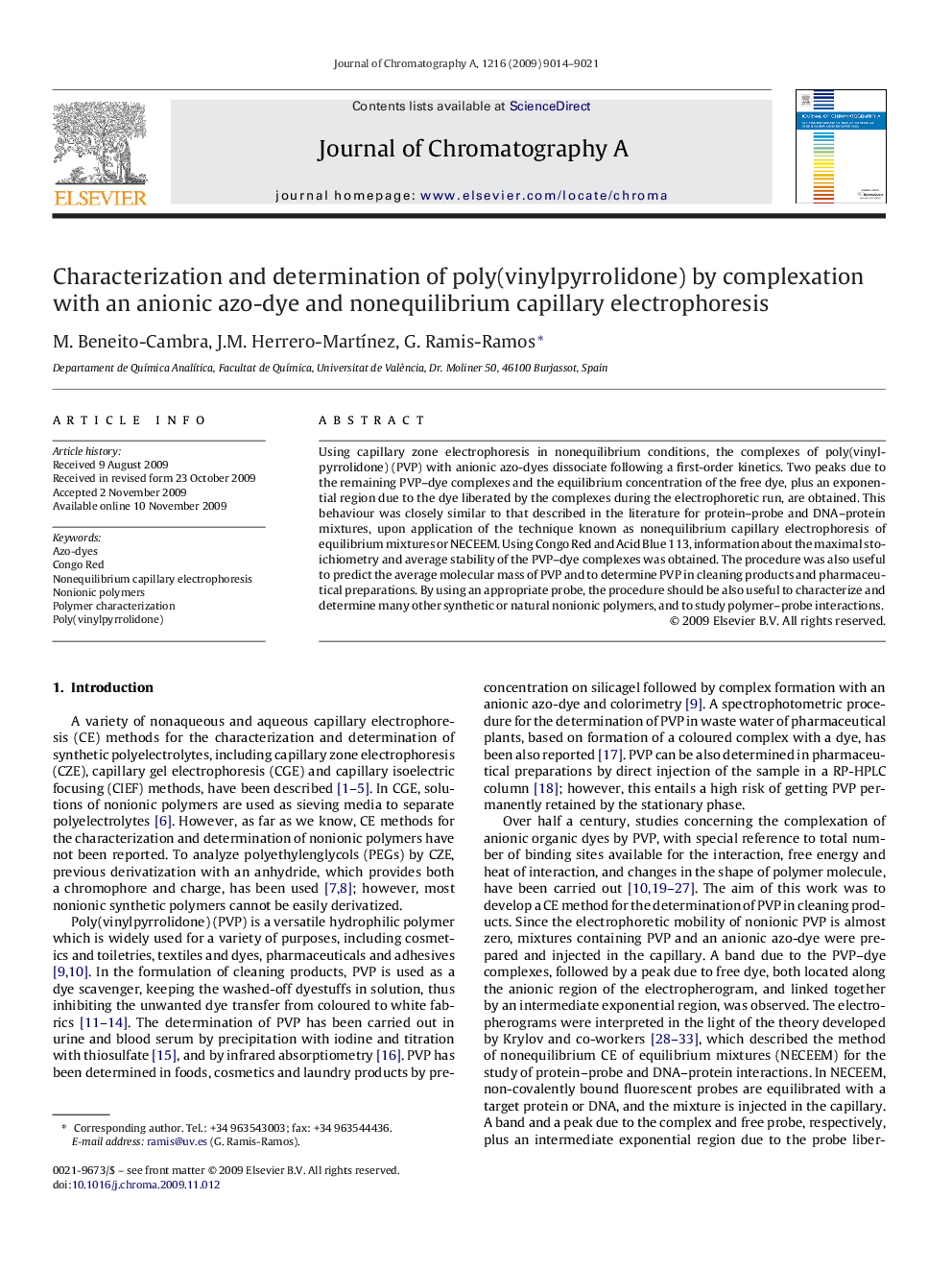| Article ID | Journal | Published Year | Pages | File Type |
|---|---|---|---|---|
| 1205444 | Journal of Chromatography A | 2009 | 8 Pages |
Using capillary zone electrophoresis in nonequilibrium conditions, the complexes of poly(vinylpyrrolidone) (PVP) with anionic azo-dyes dissociate following a first-order kinetics. Two peaks due to the remaining PVP–dye complexes and the equilibrium concentration of the free dye, plus an exponential region due to the dye liberated by the complexes during the electrophoretic run, are obtained. This behaviour was closely similar to that described in the literature for protein–probe and DNA–protein mixtures, upon application of the technique known as nonequilibrium capillary electrophoresis of equilibrium mixtures or NECEEM. Using Congo Red and Acid Blue 113, information about the maximal stoichiometry and average stability of the PVP–dye complexes was obtained. The procedure was also useful to predict the average molecular mass of PVP and to determine PVP in cleaning products and pharmaceutical preparations. By using an appropriate probe, the procedure should be also useful to characterize and determine many other synthetic or natural nonionic polymers, and to study polymer–probe interactions.
